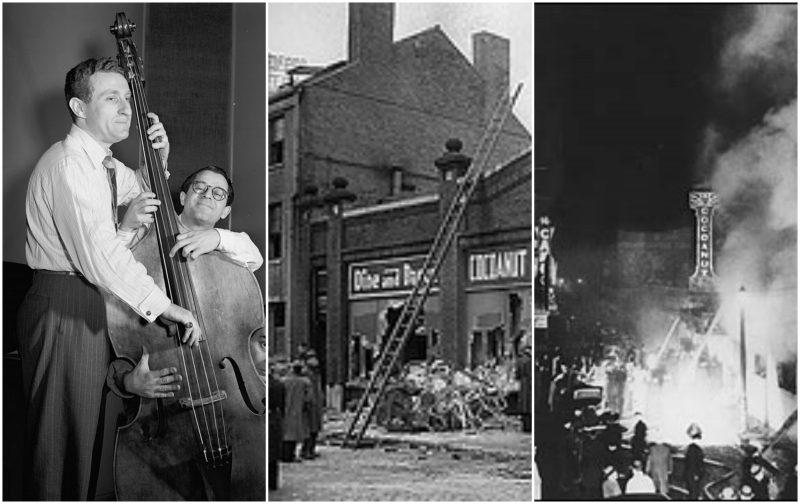One of the most prestigious clubs during the post-Prohibition era, Bay Village’s Cocoanut Grove served as a regular hang-out place for socialites and upper-class figures, as well as a haven for Boston’s gangsters. It had been a speakeasy for Boston’s gangs to operate in, successfully avoiding the authorities’ raids with bribery and corruption.
Charles “King” Solomon, the feared mafioso bootlegger and gambler, also known as “Boston Charlie,” was the owner of the club from 1931. He was gunned down by rival gangs in the men’s room of Roxbury’s Cotton Club nightclub in 1933.
On the day of November 28, 1942, a massive fire broke out and engulfed the nightclub, killing more than 490 people. It is infamously known as the Cocoanut Grove Fire.
It is considered as one of the biggest nightclub fire in US history (the death toll of the Iroquois Theatre Fire in Chicago totaled 602 victims). The event managed to land on the front covers of Boston’s newspapers, overshadowing any WWII news.
Barnet “Barney” Welansky’s stealthy ties to the mafia and the mayor, cemented the club’s reputation while avoiding any strict health and finance inspections that may have cost him money. He also employed street urchins and underage girls as waiters and bouncers for low wages. As the nightclub’s untouchable owner, he made sure his beloved club was above the law.
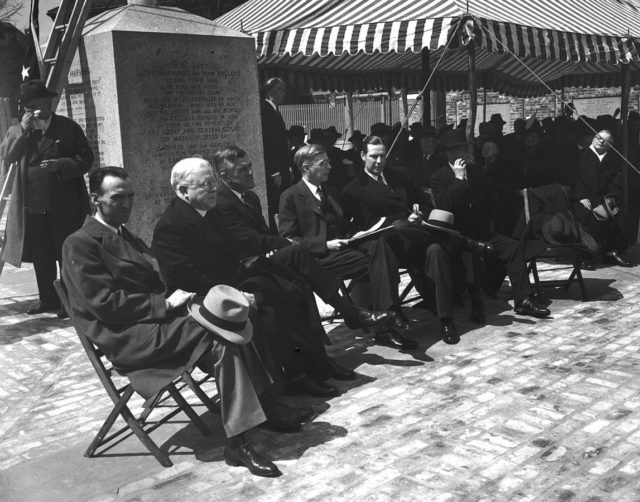
Before the fire, the flourishing nightclub enjoyed privileges from the mayor, Maurice J. Tobin. Welansky didn’t have the proper drill training in case of fire, or fire exits, or fire codes for escape.
Prior to the fire, Welansky locked the many exits in the speakeasy and hid some of them behind draperies, going so far as to brick up one emergency exit. He didn’t want his customers leaving without paying first.
Welansky thought he didn’t need “silly” fire escape rules since he had no problems with the authorities. This careless management was one of the factors which lead to the catastrophic fire.
The clumsy owner was immediately tried and convicted of manslaughter. He spent 3 years in prison, only to be pardoned by Tobin, and the Mayor himself avoided indictment.
Cocoanut Grove was established in 1927. The concrete building had rooms and lounges which were decorated with luxury furniture and draperies, and the roof could be rolled up and opened for “dancing under the stars”.
The flammable drapes, artificial palm trees, and the only exit, which was a revolving door, all contributed to the high number of victims in the fire, as the crowds pushed the revolving door from both sides. But the main reason for the fire can be tracked down in the basement of the club’s so-called “Melody Lounge”.
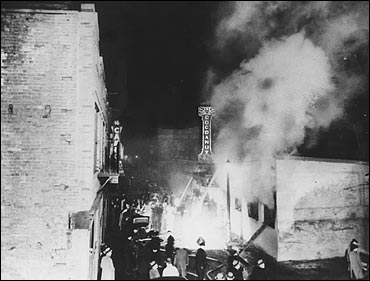
At around 10 PM, busboy Stanley Tomaszewsky lit a match to replace a light bulb which was unscrewed by a soldier who wanted privacy with his date. According to former Boston firefighter Charles Kenney’s research in 1990, flammable methyl chloride gas propellant which was used for the refrigeration system caused the fire, unbeknownst to the busboy.
The flashover was the root cause of the fire and it quickly spread throughout the club’s flammable environment, despite the staff’s attempts at dousing them with buckets of water. Many people died at the stairwell, the single revolving door didn’t help to evacuate the panicking crowd.
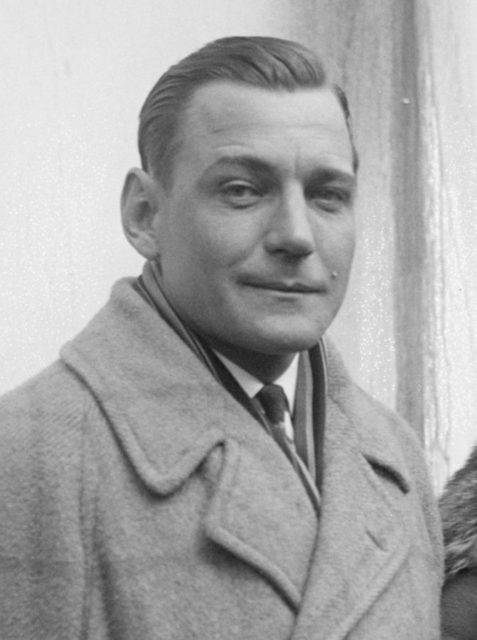
Some guests didn’t even have the chance to leave their seats, asphyxiating in the toxic fumes. The busboy survived the fire but was unfairly ostracized his whole life.
One of the famous patrons who survived on the night of the fire is Jack Lesberg, a jazz bassist who has had the honors of performing with jazz legends Louis Armstrong and Benny Goodman. According to Charles Mingus’s book, “Beneath the Underdog”, Lesberg’s escape plan was purely DIY.
He singlehandedly broke through a loose wall using his heavy double-bass to make an escape route. The passage of the book was read by famous rapper, Chuck D, in the Mingus tribute album “Weird Nightmare”.
Apparently, Lesberg fainted after escaping and woke up in a hospital the day after. His lungs were badly damaged by the toxic fumes but he lived to be 85.
Famous musical director, Bernie Fazioli, along with several other members of the house band, perished in the fire. Luckily, most of them escaped, ramming through a service door backstage.
On the streets, bodies of the injured and the dead were hosed with icy water. According to a firefighter, some of the victims breathed the hot fumes long enough that when they inhaled the cold winter air, they dropped dead.
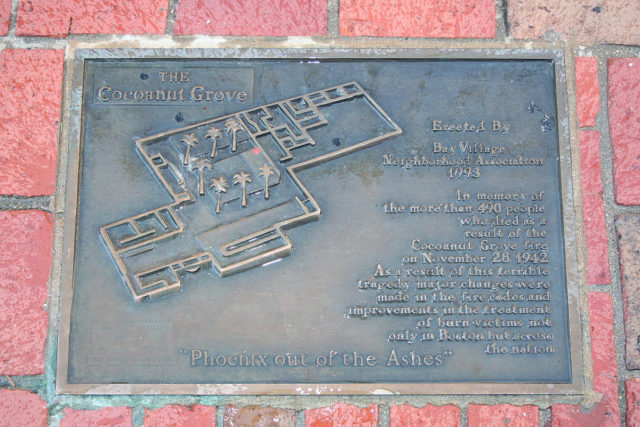
Because of the fire, there have been major reforms in the health department, improving the treatment of burn victims and upgrading firefighting equipment. Fire ordinances were also placed near larger restaurants, clubs, and bars.
Additionally, groundbreaking medical research has been pioneered since then. F.D. Moore and Oliver Cope, surgeons at the Massachusetts General Hospital perfected a fluid resuscitation technique for treating burn victims, using soft gauzes covered with petroleum jelly instead of the outdated tannic acid treatment.
The sheer, unbelievable number of victims in the fire shocked the nation. It was the main reason which lead to stricter safety measures and security standards in the US.
